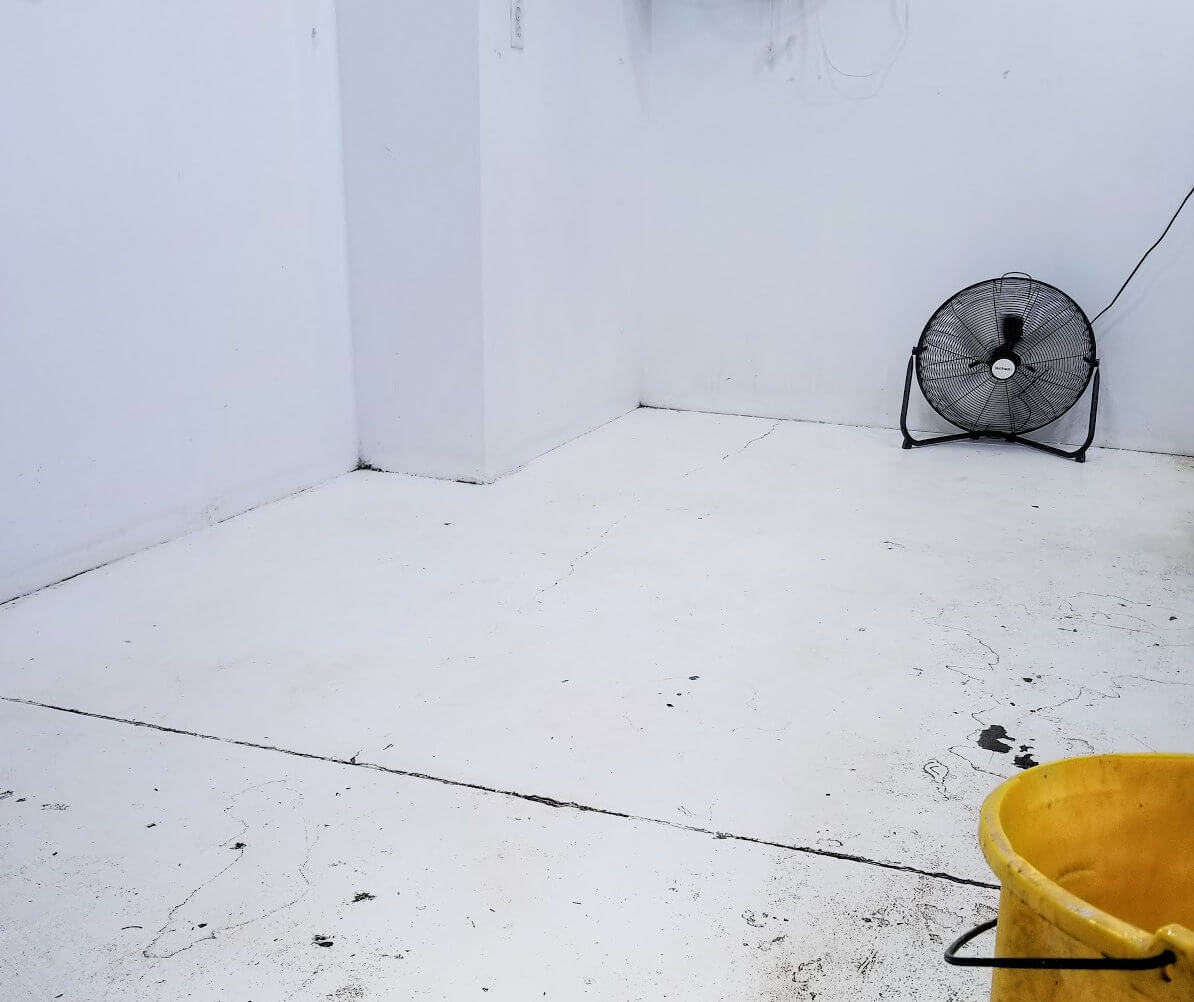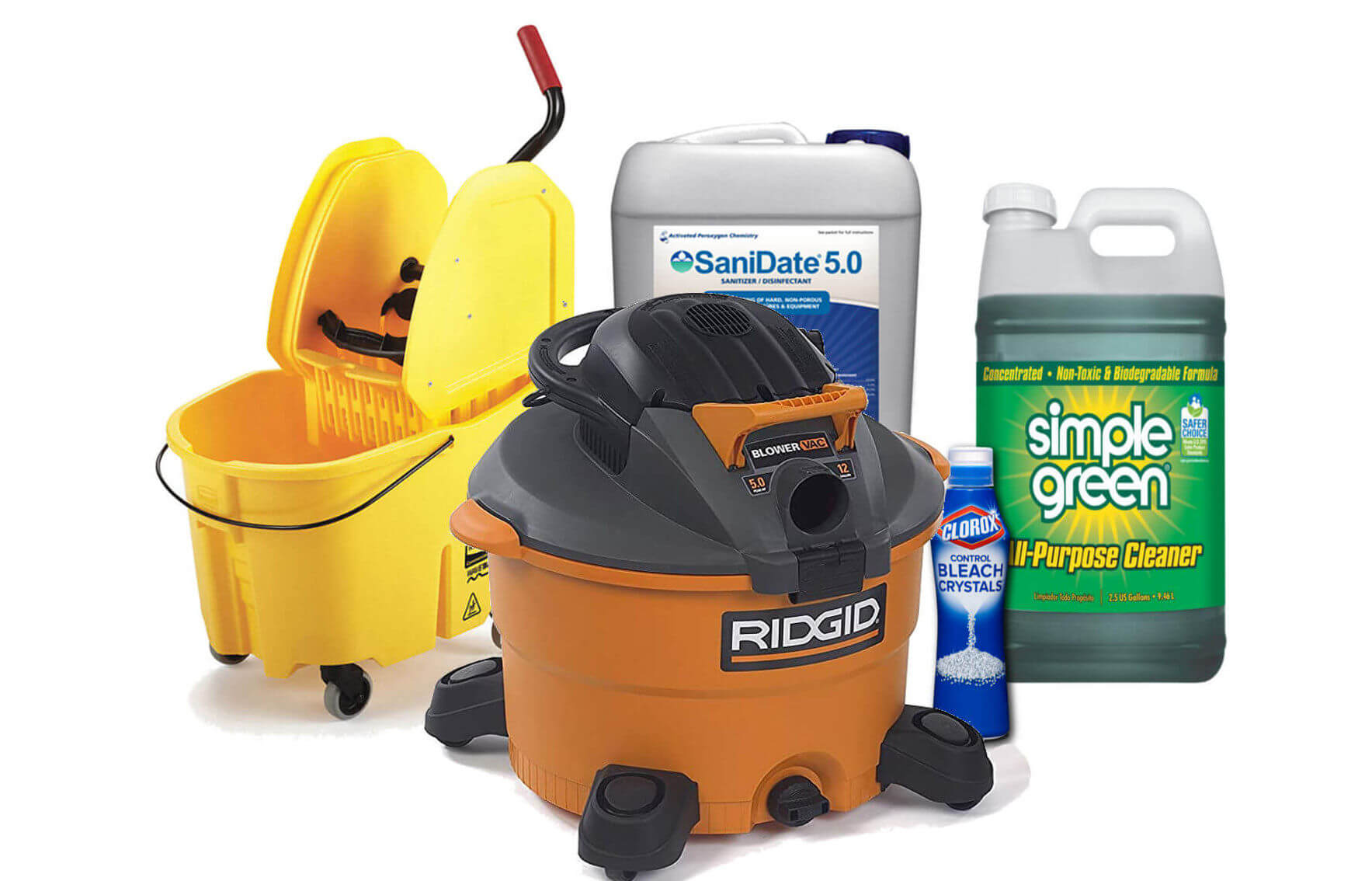- Order is Important
- First Clean, Then Sanitize
- Disinfect and Sterilize When Necessary
Order is Important
The order of steps taken to clean and sanitize surfaces is important to follow. First, you will want to clean the surface to remove visible waste and debris. Then, you will want to apply a disinfectant like bleach. Bleach is available in liquid form or dry crystals. Depending on the mix ratio used with disinfectants you can either sanitize or sterilize. For liquid bleach, a ratio of one tablespoon bleach for every gallon of water is enough to disinfect without having to rinse off the disinfectant after application. Cleaning and sanitizing are important to maintaining a healthy grow room. As a general rule, all surfaces that come into contact with plants or soil should be cleaned and sanitized on a regular basis. Some examples of objects and surfaces that would need cleaning in an indoor cultivation facility include pots, stakes, scissors, floors, walls, fans, drains, doors, and lighting fixtures.
First Clean, Then Sanitize
Surface cleaning is important to remove dirt and other debris from surfaces and objects to make the sanitization process more effective. Cleaning can be accomplished by scrubbing and using soaps. It is important that before you sanitize surfaces or objects with bleach, that you surface clean because any inorganic and organic material will diminish the effectiveness of the sanitization process. You are not killing many mold or fungi spores at this stage of the cleaning process. Once the surface cleaning is complete, you can move onto the next step which is sanitization. Sanitization is the reduction of contaminants such as bacterial or fungal spores. You can clean something without sanitizing, but not the other way around. Mixing bleach at a rate of 1 tablespoon of bleach per 1 gallon of water requires a contact time of 30 seconds to effectively sanitize surfaces and objects. Chlorine bleach is an inexpensive and effective disinfectant, more effective than hydrogen peroxide. It’s best to mix a chlorine bleach solution before use and to dispose of it daily as they can break down over time and become less effective.

Disinfect and Sterilize When Necessary
After cleaning and then sanitizing a surface, disinfection may be the next step depending on the circumstances. Disinfecting destroys most pathogens on surfaces. It is similar to sanitization, but requires a higher concentration of a solution like bleach. When using bleach to disinfect, 1 cup of bleach to one gallon of water is recommended with a minimum contact time of two minutes. It is important to know when to use disinfecting concentrations of bleach or other products because they could have adverse health effects when misused. This is because disinfection is not required for all items and surfaces in a cultivation facility. Disinfecting is useful when cleaning a room between flips to ensure that plants going from a clean vegetative room are going into a clean flower room. It can also be useful to clean out an automated irrigation system.
Sterilization is a method of cleaning that includes utilizing a cleaning product to destroy microbial life. It is not always necessary in cultivation facilities and it should not be confused with sanitization. Instead of focusing on sterilization, growers should focus on maintaining the cleanliness of their grow such as vacuuming up any spills, dried plant matter, or substrate and removing dirt or debris from fans and light hoods as these areas could potentially become hotspots for pests.

Conclusion
Whether you are cleaning, sanitizing, or disinfecting it is important to change your cleaning water regularly to ensure the efficiency of a cleaning product (detergents and dirt can inactivate chlorine) and to prevent the spreading of dirt and pathogens. The order of steps taken to clean and sanitize surfaces is important to follow. First, clean surfaces to remove visible waste and debris, then apply a cleaning product to sanitize the surface. Cleaning and sanitizing are important to maintaining a healthy grow room and as a general rule, all surfaces that come into contact with plants or soil should be cleaned and sanitized on a regular basis. Cleaning is as much a part of a horticulturalist’s ongoing cultivation facility maintenance just as changing a light bulb or cleaning out a nutrient reservoir.
Comments powered by Talkyard.